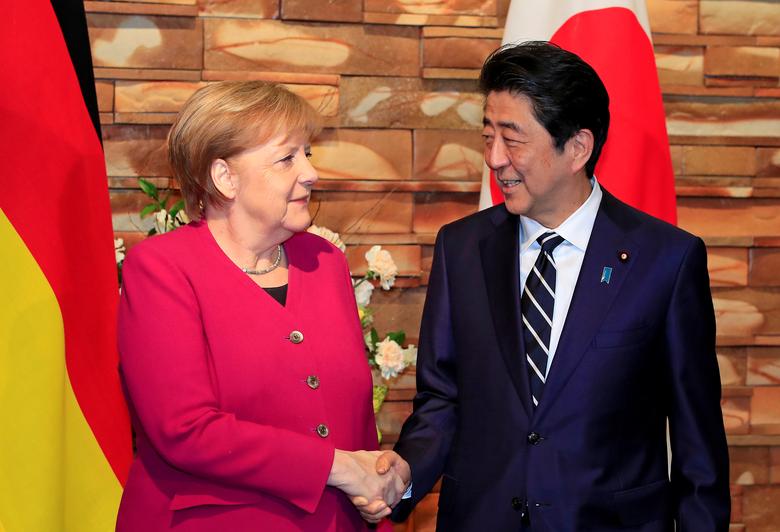
- ARAB NEWS
- 01 Jul 2025

As a writer, I have always loved Japanese proverbs as, taken together, they seem to me to explain the totality of the world. One of my favorites is, “When poisoned, one might as well swallow the plate,” which roughly translates into English as, “In for a penny, in for a pound.”
This saying seems to have become the unofficial credo of the long-running premiership of Shinzo Abe, who has been Japan’s prime minister since December 2012. Skillfully, quietly and almost wholly unremarked upon, Abe has forcefully taken the lead in balancing against the relatively more aggressive Chinese foreign policy in Asia pursued by President Xi Jinping.
Japan’s success is possible as, though we presently live in an era epitomized by superpower bipolarity, it is a very different type of two-power standoff than was the Cold War. From 1945 to 1991, the US and the Soviet Union so dominated the international scene that they easily lined up much of the rest of the world into two rigid, competing camps, characterized above all by their allegiance to either Washington or Moscow. Today’s era of much looser bipolarity — where, beneath the dominant Sino-American conflict, great powers Russia, the EU, the Anglosphere countries, India and Japan have much more latitude to act independently in their own interests — has allowed Tokyo to successfully take the lead in balancing Beijing, even in the face of a disastrous partial US disengagement.
This wildly underreported Japanese foreign policy gambit has two distinct parts: Geoeconomics and geostrategy. In January 2017, largely for no other reason than his unreasoning hatred of his immediate predecessor, new US President Donald Trump turned his back on the centerpiece of the Obama administration’s “pivot to Asia” — the Trans-Pacific Partnership (TPP), an ambitious free trade deal designed to link America far more economically closely to its allies along the Pacific Rim. However, even beyond the significant economic aspects of TPP, a primary purpose for the deal was unabashedly geopolitical. TPP would link together the non-Chinese Asian world, establishing common trading norms around the US rather than Beijing.
In a disastrous act of foreign policy vandalism, Trump walked away from the TPP deal with 11 allied countries, which the US itself had set in motion. In the old Cold War days of tight bipolarity, that would have been it; cowed by America’s disinterest, the allies would have dispiritedly abandoned the pact. But, in this new era of loose bipolarity, instead something remarkable happened: The Abe government stepped into the void, shepherding a revised TPP to fruition.
The revised pact, now called the Comprehensive and Progressive Agreement for Trans-Pacific Partnership (CPTPP), became effective in December 2018. Even without US participation, CPTPP’s 11 members account for fully 13 percent of the world’s gross domestic product and is the third-largest free trade area after the North American Free Trade Agreement and the European Single Market. Filling the US void, Abe’s government hosted three of the four ministerial meetings that rescued the accord.
Though the terms were slightly modified, the geopolitical rationale behind the pact remained the same, animating Tokyo’s efforts to salvage the accord. Indeed, for countries such as Japan, Australia, Malaysia and Vietnam, CPTPP is largely a geoeconomic measure designed to counter China’s economic dominance in Southeast Asia.
CPTPP stands in direct opposition to the flagship Chinese geoeconomic plan, the Belt and Road Initiative (BRI). CPTPP emphasizes transparency and places limits on state-owned enterprises, in direct contradiction to both the BRI and China’s own economic model. In addition, Tokyo is keen to lock down the rest of Southeast Asia (Thailand, Taiwan, Indonesia, and the Philippines) as part of the CPTPP orbit.
Abe’s premiership has also designed a geopolitical initiative, matching the CPTPP in balancing a rising China: The Quadrilateral Security Dialogue, or “the Quad.” First established during Abe’s brief earlier stint as prime minister in 2006-07, the Quad — composed of key regional powers Japan, the US, Australia, and India — initially fell apart due to China’s diplomatic pressure on Australia and India. However, given President Xi’s far more aggressive regional stance, Abe has managed to resurrect this nascent grouping, which in the future could serve as the basis for a more formal collection of democratic Asian states determined to balance Beijing.
In a disastrous act of foreign policy vandalism, the US walked away from the TPP deal.
Dr. John C. Hulsman
While it is true that Quad members are not yet united in viewing the grouping as anything like a formal alliance directed against Beijing (India has been particularly hesitant, given its nonaligned history), events are moving in the Quad’s direction. For his part, in October 2019, US Secretary of State Mike Pompeo could not have been clearer, saying the Quad will prove invaluable in “ensuring that China retains only its proper place in the world.”
Following recent Sino-Indian clashes in the Himalayas, Beijing’s bullying of Australia over its calls for an investigation into the origins of COVID-19, and growing Sino-American strategic tensions, it may well be that the Quad’s time is coming. Arrestingly, when the history books of the era are written, it may also well be that Abe’s quiet but effective diplomacy in salvaging the CPTPP and establishing the Quad get far more attention as milestones in balancing China than they have received in our own heedless age.